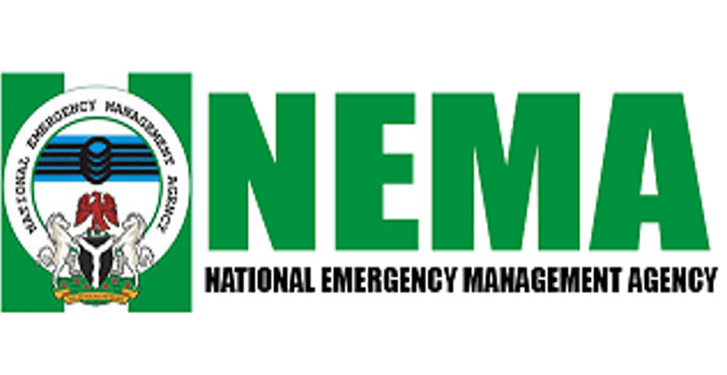The management of disasters in Nigeria has come under public scrutiny in recent times. This is especially so in the light of the various humanitarian crisis that has been experienced in Nigeria, and worthy of mention is the Boko Haram crisis in North-East Nigeria. As a start, this subject would not be understood in its entirety if the agency of government responsible for the management of national emergencies in Nigeria is not highlighted.
The National Emergency Management Agency (NEMA) was established via Act 12, as amended by Act 50 of 1999, to manage disasters in Nigeria. It has been tackling disaster-related issues through the establishment of concrete structures with the overarching mission to coordinate resources towards efficient and effective disaster prevention, preparedness, mitigation, and response in Nigeria.
It acts in the following areas: Coordination, Disaster Risk Reduction, search and rescue, policy and strategy, Geographic Information System, Advocacy, education, administration, finance, and logistics; relief and rehabilitation; planning, research, and forecasting.
Nigeria, as a nation, has suffered from its share of disaster occurrences. For example, between 1992 to 2000, Nigeria recorded about 400 major fire and aircraft disasters involving more than 10,000 people with a death toll of about a thousand-plus, and the quantum of property destroyed was evaluated to be in millions of dollars.
These include flooding and soil erosion, while the human-made ones include dam-failure, maritime disasters, bomb explosions, conflicts occasioning displacement of victims), oil spillage, population explosion, and air crashes. Nigerians have been lucky with earthquakes but not so fortunate with floods, pollution, and oil spillages.
The loss of lives and inefficient disaster management in Nigeria has been a burden too hard for the government to carry. The problem has been compounded by the fact that the citizens lack the basic knowledge of health and safety as well as a disaster avoidance technique. As a result of the inefficiency and apparent shortcomings in the management of disasters and to address the limitation in the scope of the operation of National Emergency Relief Agency NERA, and proffer solutions to the ineffective disaster response in the country, on the side of NERA which was established in by Decree 48 of 1976 by the Federal Government of Nigeria to fight the reoccurrence of disaster and the post effect of the disaster which is death, the federal government of Nigeria held a meeting with stakeholders and leaders of NERA and the outcome metamorphosed to the formation of NEMA for effective management of disaster in Nigeria.
The question is thus: Is NEMA making progress on her mandate? The answer is yes due to the following reasons. Since April 2017 when Engr Mustapha Maihaja came on board as the director-general of the agency, a lot has changed. This much has been attested to my critical stakeholders in the industry. They indeed stated that the policy drive and innovations introduced to the operations of the organization indeed gave it a fresh breath of life.
As a first, NEMA under the leadership of Engr. Mustapha Maihaja established Disaster Response Units (DRUs) to enhance disaster management efforts nationwide further. DRU’s are designated military units established through the instrument of the National Disaster Response Plan (NDRP) and charged with the responsibility of providing immediate assistance to civil authorities to reduce further loss of lives and property as well as human suffering during a National Disaster.
This is aside from the fact that efforts are almost completed to put in place Hi-Tech facilities and other infrastructure for an improved and all-encompassing disaster management system for our country. An example is the installation of the Search and Rescue Satellite-aided Tracking (COSPAS-SARSAT) system. COSPAS-SARSAT system, since its inception in 1982, has reportedly saved over 20,000 lives worldwide. The system consists of emergency radio beacons, equipment on satellites in low-earth polar ground receiving stations, also called Local User Terminals (LUTs), Mission Control Centers (MCCs), and Rescue Coordination Centers (RCCs).
It is on record that only three COSPAS-SARSAT technologies exists in the whole of Africa, and one of them is located in the NEMA headquarters in Abuja. This is indeed a rare feat and an example of the leadership drive of the director-general towards ensuring a regime of effective and timely disaster management in Nigeria.
It has also been stated that most disasters resulting in high casualty rates are due to the absence of an early warning mechanism. In this regard, NEMA has established a functional GIS lab for early warning and precision in response to disasters and emergencies. The lab collects spatial data, analyses, and prepares useful information that helps to aid responses to disaster. It is one of the significant facilities of the agency for its disaster risk reduction programme.
The Agency under Maihaja has gone into collaborative pacts with Helicopter operators in the Country, NGOs, INGOs, International, regional, and sub-regional bodies and agencies for both capacity building and technological enhancement in pursuit of a workable preparedness approach to curtailing disasters.
It must be stated that all of these innovations have indeed positioned NEMA as an effective disaster management agency. It is also on record that NEMA under the watch of Engr. Mustapha Maihaja has seen the development of an improved welfare package for its workers that consists of improved insurance and emoluments. This has led to an increase in the productivity level of the staffer in the agency. This is indeed commendable and an indication that the exceptional and proactive leadership provided by Engr. Mustapha Maihaja is indeed yielding dividends and responsible for the various successes recorded by the agency in managing disasters in Nigeria.
NEMA under Maihaja has also implemented measures that ensure unscrupulous elements do not abuse materials meant for the needy. It has eliminated the practice where impostors collect materials intended for Internally Displaced Persons (IDPs) through the biometric registration of affected persons. Critical stakeholders have recognized this feat as indeed revolutionary.
It is indeed a statement of the fact that NEMA under the watch of Engr. Mustapha Maihaja is indeed making tremendous progress on her mandate of effective disaster management in Nigeria. The director-general has set a worthy example of what sound leadership should be in Nigeria in our quest for socio-economic development.
Agada is a human resource practitioner and wrote from Abuja.




Discussion about this post